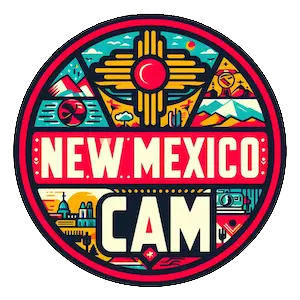Espanola, NM Weather Cams
Espanola Cam
Espanola, New Mexico: A Journey Through Time in the Heart of the Tewa Homeland
Espanola, NM Weather Cams. Nestled in the picturesque Española Valley, the city of Espanola, New Mexico, has a rich and captivating history that spans centuries. This region, known as the heartland of the Tewa people, has been a crossroads of cultures, a site of significant historical events, and a testament to the enduring spirit of its inhabitants.
The Tewa people, one of the Pueblo tribes of the American Southwest, have called this area home for centuries. Their ancestors built impressive adobe dwellings, cultivated the fertile land, and developed a rich cultural heritage deeply rooted in tradition. The arrival of the Spanish conquistadors in the 16th century marked a pivotal moment in the region’s history.
In 1598, Juan de Oñate, a Spanish explorer and colonizer, led an expedition into the region, establishing the first European settlement in what is now New Mexico. This settlement, San Gabriel del Yunque, was founded near the present-day city of Espanola. It served as a base for Spanish colonization efforts and marked the beginning of a complex intermingling of cultures.
The Spanish presence brought with it the introduction of Christianity, new agricultural practices, and architectural styles. However, the encounter between the Spanish and the Tewa people was not always peaceful. In 1680, the Pueblo Revolt, led by the charismatic leader Popé, erupted, driving the Spanish out of the region for over a decade. This uprising was a testament to the resilience and determination of the indigenous people to preserve their way of life.
After the Spanish reconquest in 1692, the region witnessed a period of uneasy coexistence between the colonizers and the native inhabitants. The Santa Cruz de la Cañada land grant, established in 1695, became an important center of Spanish settlement and agriculture. This grant, spanning over 300,000 acres, played a crucial role in shaping the region’s economic and social landscape.
As the years passed, the area that would become Espanola grew in significance. In the early 19th century, the Santa Cruz de la Cañada settlement emerged as a thriving trade hub, attracting merchants and travelers from across the region. The Santa Fe Trail, a vital commercial route connecting Missouri and Santa Fe, passed through the area, further enhancing its economic importance.
The arrival of the railroad in the late 19th century marked a new era for Espanola. The town became a transportation hub, facilitating the movement of goods and people across the Southwest. This influx of economic activity and population growth led to the establishment of Espanola as an incorporated town in 1925.
Throughout the 20th century, Espanola experienced periods of growth and challenges. The city’s proximity to Los Alamos National Laboratory, established during World War II, brought economic opportunities but also raised environmental concerns. The region’s rich cultural heritage, including its vibrant arts and crafts scene, continued to attract visitors and celebrate the diverse traditions of the Tewa people and their Spanish and Anglo neighbors.
Today, Espanola stands as a testament to its resilient and diverse past. The city embraces its multi-cultural roots, celebrated through events like the annual Española Valley Matachines Dance, which honors the region’s unique blend of Spanish and Tewa traditions. The Pueblo de Cochiti, located just north of Espanola, continues to preserve and share the rich heritage of the Tewa people through their art, pottery, and cultural practices.
As Espanola looks to the future, it remains deeply connected to its storied past. The city’s commitment to preserving its history, celebrating its diversity, and fostering economic growth ensures that the spirit of this remarkable region will endure for generations to come.
For more information, visit the Espanola, New Mexico official website.
